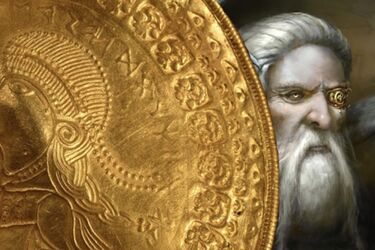Golden "disc of god" from the 5th century AD found in Denmark

Rune specialists from the National Museum in Copenhagen have deciphered a golden "god disc" discovered in Western Denmark. The disc is special because it bears the oldest known reference to Odin, the main deity of Norse mythology.
This was reported by Heritage Daily.
This gold disc was discovered in 2020 in the city of Vindelev, which is located in central Denmark. It is part of a large treasure known as the Vindelev Treasure. This treasure is currently on display at the National Museum in Copenhagen.
Other interesting items that have been found include gold medallions and Roman coins turned into jewellery. One of the most famous medallions has an image of the Roman Emperor Constantine the Great.
Archaeologists believe that this treasure was hidden about 1500 years ago, in the fifth century AD. This means that this gold disc is at least 150 years older than a brooch from the sixth century found in Germany, which was also mentioned in the Bible. That artefact was considered the oldest known to scientists.
The gold disc is a brakteate, i.e. a flat, thin coin made of gold or silver with one side embossed. It bears the inscription saying, "He is the man of Odin".
According to the researchers, this inscription probably refers to a ruler or tribal leader. He may have hidden a treasure during a conflict to preserve valuables or it could have been a tribute intended to reconcile the gods.
Odin, also known as Wotan, is the highest one-eyed god in Norse mythology, who was also considered the god of war and victory. His companions are ravens named Hugin and Munin and wolves named Geri and Freki. According to mythology, he rode a horse named Sleipnir, which had eight legs.
As a reminder, archaeologists have unearthed an ancient pin and bead in the Rivne region.
If you want to get the latest news about the war and events in Ukraine, subscribe to our Telegram channel!
